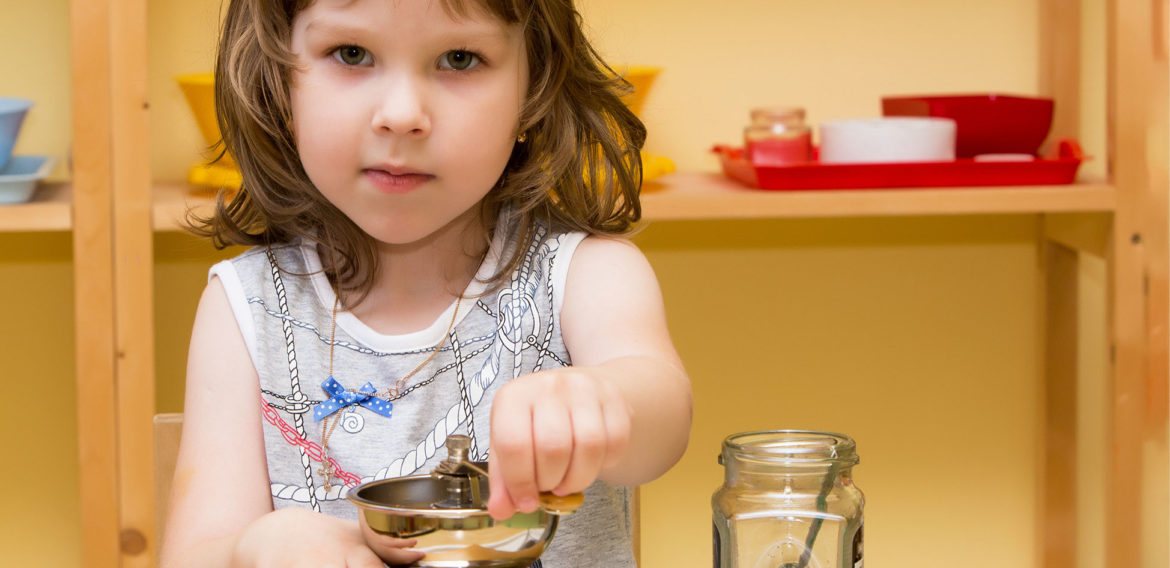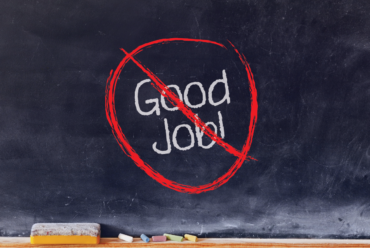Practical Life: An Area of Purpose
 In every Montessori Classroom, there is an area that sparks the magic of learning. This area, gives children the opportunity to develop fundamental skills that lay the foundation for all learning that is to come. This area is called Practical Life. It ignites concentration, which is the real purpose of this hands-on area.
In every Montessori Classroom, there is an area that sparks the magic of learning. This area, gives children the opportunity to develop fundamental skills that lay the foundation for all learning that is to come. This area is called Practical Life. It ignites concentration, which is the real purpose of this hands-on area.
I have quietly observed as parents walk through my Practical Life area of my classroom. Picking up the carefully placed spoons displayed on immaculate clean trays, touching the dry beans inside the delicate glass bowls, probably wondering why these materials are there. How can transferring dry beans, from one bowl to another, do any good for their child’s academic development? I’ll confess. That was me. Years back when I toured the classroom I picked to leave my most precious creation. My son. Little did I know then, that that very environment I left him in, five days a week for half a morning, would ignite an incredible developmental journey in him that I had never expected.
Flash forward, many years later and a Montessori Early Childhood Certification notch on my belt, I have come to understand one thing, very, very well.
In order for children to excel in subjects such as math and language, children need to learn to concentrate first. Concentration is key to all learning.
And it is in Practical Life that children learn this fundamental skill, through the practice and repetition of everyday real life activities. So transferring beans from one bowl to another, has a huge underlying purpose. It is promoting concentration and it is crucial for all learning that will follow.
The aim of Practical Life is actually quite simple. It is to teach children order, concentration, coordination and independence (OCCI). Every activity found in this area has a purpose. All of the activities on these shelves are displayed from left to right, top to bottom and easiest to hardest. This method of placement has direct and indirect aims. This type of setup also aides children in isolating one difficulty at a time and helping them overcome obstacles.
Three very important areas make up Practical Life.
Preliminary Shelves
These shelves offer everyday activities such as pouring, spooning, stringing, tonging, twisting and folding. These activities help every aspect of the development of order, concentration, coordination and independence.
Care of Self
Activities on this shelf help children become independent and learn to care for themselves. A buttoning frame, which is often found in this area, directly teaches children how to button their clothes. Indirectly, however, it promotes longer periods of concentration and strengthens their hand muscles, which in turn prepares them for handwriting.
Care of Environment
Activities found on this shelf directly teach children how to care for and maintain their environment. Some activities found in this area are table scrubbing, dish washing and cleaning up a spill. These activities are indirectly helping children develop a love for order, self- control, refining of movements and most importantly, they are enhancing their concentration.
One very important component to Practical life, which does not have a designated shelf is called Grace and Courtesy. Teachers are the biggest models of this as children lead by example. This model display of good manners, empathy and grace, directly helps children build strong character traits of their own which indirectly, builds their perseverance. Perseverance is a trait much needed to be successful in a Montessori learning environment.
Having been a Montessori Teacher for some years now, I can attest to the fact that concentration is truly the key to a child’s academic development. This is why, in a Montessori setting, we aim to offer a three hour work cycle where children can develop concentration that leads to glimmerings of “normalization”. During a work cycle, a child is free to choose a variety of purposeful activities in various areas of the classroom. These activities jump start their concentration.
Somewhere along this work cycle, we will see the children display a period of “false fatigue”. During this period, they tend to roam around the room, touching, looking and seeking socialization with their peers or teachers or wanting a more sensory experience, like eating snack. In our adult world, this would be the equivalent of our “coffee break”. And aren’t we much more productive after that? I would say so, and children are too!
The period that precedes false fatigue is particularly important for us Montessori teachers, because it is during this next phase of work that concentration is at its peak and children are more susceptible to grasping and understanding bigger concepts. This is when a teacher will find most success in offering big lessons in math and language, or more intricate activities in geography and science. The day in and day out repetition of this work cycle, assist children in displaying what we Montessorians refer to as “normalization”. This is best described when a child is able to chose and activity, achieve concentration and end with a period of rest. In our adult world, this would be the equivalent of “end of work day”. And aren’t we all ready to relax after all of that? I would say so and so are they!
It all begins in Practical Life. In order for children to excel in learning, they must learn to concentrate first. Practical Life is the area of the classroom where children are provided with a variety of concrete activities that develops this fundamental skill. It not only ignites concentration, it also fosters independence, coordination, a love for work, a love for order, initiative within a child, self-discipline, empathy, sociability, joy and so much more. Practical life has depth. It is more than just an esthetically pleasing area with nice trays displaying glass bowls with beans and pretty spoons.
Practical Life has real purpose. It ignites concentration and it is the heart and soul of every Montessori classroom and it is the foundation for all learning.









can you give me guidance on how to help my son who has lots of energy but does not have adhd?
Hi Yukita!
I would suggest large amounts of outdoor time. Your child may benefit from gross motor activity. I would suggest a yoga ball as a chair so he can work those muscles that need stimulation and also a stress ball…something he can squish. He definitely should be making trips to the park on a daily basis.